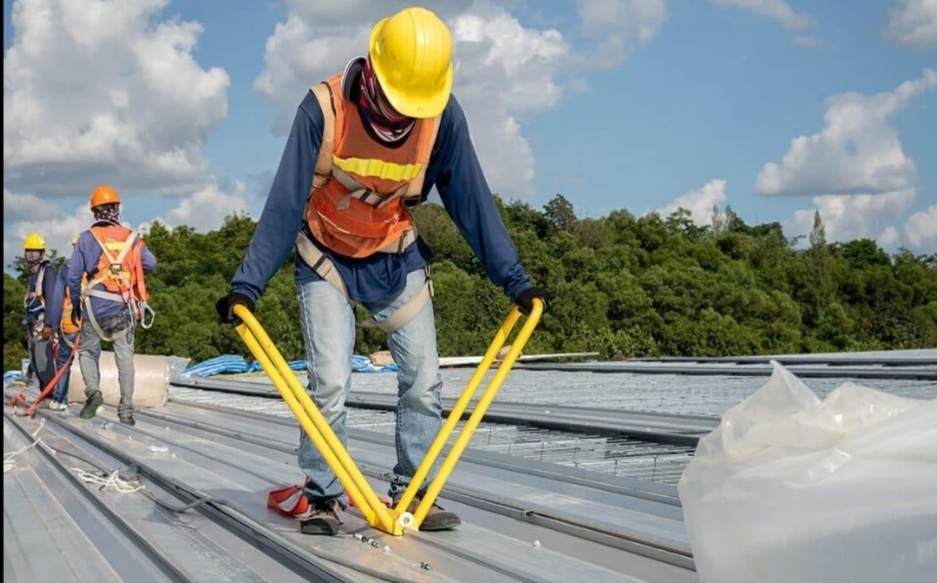There’s something peaceful about waking up to a thick blanket of snow covering everything in sight. But while it might look pretty from your window, that winter wonderland sitting on your roof could be doing more damage than you think.
Roofs in Calgary take a serious beating during the winter months. Between heavy snowfall, sudden freeze-thaw cycles, and relentless ice buildup, even the strongest roofs can reach a breaking point.
So, how do you know when your roof is overwhelmed? And when is it time to call in professional roofing contractors in Calgary?
Let’s break down the signs that your roof is struggling and what you can do before a cozy snow day turns into a costly emergency.
The Weight Of Snow: Why It’s A Bigger Deal Than You Think
Not all snow is created equal. Fluffy snow may seem harmless, but wet, packed snow can weigh up to 20 pounds per cubic foot. Now imagine that multiplied across the entire surface of your roof.
When left unaddressed, this weight:
- Puts extreme pressure on roofing structures
- Causes cracking or shifting in support beams
- Leads to sudden roof collapse in older or weakened buildings
If your roof has flat or low slopes, it’s even more vulnerable. Snow tends to collect and stay longer, creating ice dams and excess stress.
Warning Signs Your Roof Is Overloaded
So, how do you know when it’s time to act? Here are some clear red flags that suggest your roof is crying out for rooftop snow removal:
1. Sagging Rooflines
If the once-straight line of your roof now looks bowed or uneven, that’s a major concern. Sagging means the structure is struggling under the snow’s weight.
2. Creaking And Popping Sounds
Does it sound like your home is groaning? It probably is. Strange sounds from the attic or ceiling can indicate internal stress and movement in your roofing framework.
3. Interior Water Leaks
Water stains on your ceiling or dripping water inside your home during winter usually point to ice damming. Ice builds up at the eaves and forces water to back up beneath your shingles.
4. Visible Ice Dams
Thick ridges of ice forming along the edges of your roof are a classic sign of poor drainage. Ice dams prevent snow melt from flowing off, causing water to pool and seep into your home.
5. Cracks In The Walls Or Ceiling
Pressure from above can distort your home’s structure. Look for new cracks forming in the drywall, especially around upper-floor ceilings or windows.
The Role Of Ventilation In Preventing Ice Dams
Believe it or not, roof ventilation is one of the most overlooked winter roofing issues.
When your attic is too warm due to poor airflow, it causes snow to melt unevenly. That water then re-freezes at the roof’s edge, forming an ice dam.
To stop this cycle:
- Make sure attic vents are clear and working
- Check insulation levels in your attic
- Avoid heat leaks from recessed lighting or exhaust fans
A properly ventilated roof prevents snow from melting prematurely, which is key to avoiding winter water damage.
When To Call For Emergency Roofing Services
If you notice more than one of the warning signs mentioned above, it’s time to take action and fast.
Professional rooftop snow removal services are trained to:
- Safely remove excess snow using proper tools
- Inspect your roof for hidden damage beneath the snow
- Repair minor issues before they escalate into full-blown disasters
Avoid trying to remove snow yourself. Using shovels or salt can damage shingles or gutters. More importantly, working on a snow-covered roof is extremely dangerous.
Snow Removal Isn’t Just For Emergencies
Preventive rooftop snow removal in Calgary can save thousands in repairs. Don’t wait until there’s already damage. Here’s when you should schedule snow clearing:
| Snow Depth | Risk Level | Recommended Action |
| Less than 6 inches | Low | Monitor for buildup |
| 6 to 12 inches | Moderate | Consider snow removal |
| 12 inches or more | High | Immediate professional removal |
For commercial buildings or flat-roofed homes, even a few inches of snow can pose serious drainage issues. Regular removal prevents long-term damage and ensures your roof performs well through the winter season.
Don’t Ignore Gutter Trouble
Your roof and gutters work together to protect your home. In winter, clogged or frozen gutters can lead to:
- Overflowing water
- Ice build-up at the roofline
- Water seeping into soffits and walls
Keep an eye on your downspouts and gutter flow. If water isn’t moving freely after a snowfall, you may need both ice dam removal and gutter inspection.
Final Tip: Get A Post-Winter Roof Inspection
It’s smart to schedule a spring roof inspection even if you’ve made it through the snow season without visible damage. Ice and snow can weaken fasteners, loosen flashing, or leave behind hidden leaks.
A post-winter inspection ensures your roof is ready for Calgary’s unpredictable spring weather and helps you plan any minor repairs early.

